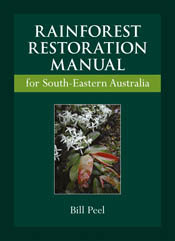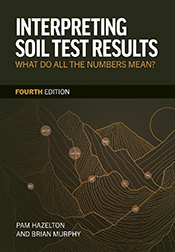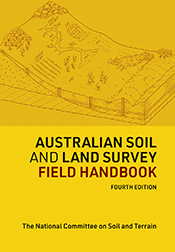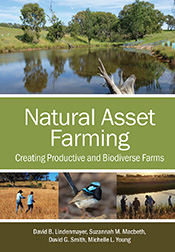Rainforest Restoration Manual for South-Eastern Australia
By: Bill Peel
Empowers individuals or groups to be able to restore, manage, protect and conserve our magnificent rainforests.
Rainforest Restoration Manual for South-Eastern Australia is the definitive guide to the recovery and restoration of Subtropical, Warm Temperate, Cool Temperate, Gallery, Dry, Dry Gully and Littoral Rainforests from south-eastern Queensland to Tasmania. All of these rainforest types were inherently rare prior to settlement, and today with depletion, feral animals, weeds and climate change, all are threatened – with many listed under state and federal legislation. + Full description
The manual presents detailed restoration methods in 10 easy-to-follow steps, documenting the research and trials undertaken during rainforest restoration over more than two decades. These experiments and their results will empower readers to uncover answers to many of the problems they could encounter. The manual is supported by a CD that provides important background information, with 32 appendices, a propagation manual for the region's 735 rainforest plants, an illustrated glossary and resources for teachers. Species lists and specific planting guides are provided for the 57 rainforest floristic communities that occur from the coast to the mountains between Durras Mountain in New South Wales and the Otways in Victoria.
Extensively illustrated with colour photographs, this book will empower you or your group to be able to restore, manage, protect and conserve the magnificent rainforests that are in your care. The general principles and techniques described will meet the needs of students and teachers, novices, experienced practitioners, community groups and agencies alike.
- Short descriptionNews
No longer available in a print edition.
Reviews
"The multiple steps to restoration laid out include practical tips and tools, and they are well complemented with informative photographs and illustrations… Much of the book’s focus is on providing tools so that the reader can build capacity for context-driven research and knowledge building before any actual work is undertaken. As anyone who is involved in restoration projects anywhere knows, this is absolutely key… The CD included with the book is packed with useful tools, spreadsheets, and matrices of information, and in many cases explains the pros and cons of arguments for and against practices in more detail than the book."
Kristin den Exter, Restoration Ecology, January 2012
"Bill Peel is an expert on rainforests... Throughout the book, his knowledge, passion and enthusiasm are evident and contagious. He has produced an excellent piece of work that is suitable for all. It is well written, well put together and easily understood. I highly recommend the book."
Maria Gibson, The Victorian Naturalist, June 2011, Vol. 128 (3), pp.121-122
"This is the definitive guide for restoring and conserving the natural rainforests in Australia that is thoroughly researched and well presented."
Paul Plant, subTropical Gardening, Issue 22, 2011
"This book is an absolute treasure trove of useful information about rainforest regeneration
in south-eastern Australia."
Claudia Catterall, Australian Plant Conservation, Vol 19, No 2, September-November 2010
"This book is the definitve guide...an essential part of any rainforest restoration project and distils the experiences of 30 years into one easy to use package. The general principles and techniques described will meet the needs of students and teachers, novices, experienced practitioners, community groups and agencies alike."
R G Richardson, Plant Protection Quarterly, Vol 25(3), 2010
Details
ePDF | June 2010ISBN: 9780643101319
Publisher: CSIRO Publishing
Available from eRetailers
ePUB | June 2010
ISBN: 9780643102040
Publisher: CSIRO Publishing
Available from eRetailers
Features
- Practical and easy to read
- Will appeal to a wide audience of professionals and community volunteers
- Extensively illustrated with colour photographs and includes a CD with a variety of background information
Contents
Chapter 1 Background to rainforest restorationChapter 2 Understanding your rainforest and applying first aid
Chapter 3 Your rainforest and regional context
Chapter 4 Immediate actions and site planning
Chapter 5 Choosing the method of restoration
Chapter 6 Resources
Chapter 7 Project planning
Chapter 8: Project implementation
Chapter 9 What is success in restoration?
Chapter 10 Maintenance and ongoing ecological management
Index
Contents for Supplementary material on CD-ROM
Chapter S1 Scope and history
Chapter S2 Why restore rainforest?
Chapter S3 Social theory and philosophy
Chapter S4 Ecological theory
Chapter S5 Where your site sits in the landscape
Chapter S6 General principles
Chapter S7 Managing disturbance
Chapter S8 Plant stock and planting
Chapter S9 Rainforest depletion in south-eastern Australia
View the full table of contents.
Authors
Bill Peel is an ecologist who has worked across a wide range of community organisations as well as state and federal natural resource management agencies, local government and in many consultancies over the last 30 years. During that time he has been a survey botanist, mapped and supervised mapping of vegetation and old-growth forests as well as the identification of National Estate values for regional forest agreements.He began his first rainforest restoration site in 1987 and his passion for restoration ecology has led to a region-wide research effort to document rainforest restoration techniques. He is a founding member of the East Gippsland Rainforest Conservation Management Network. He is currently the municipal ecologist for Port Macquarie-Hastings Council on the Mid North Coast of New South Wales.
Supplementary Material
The print copy of this book contains a CD-ROM with supplementary material. You can also download a zip file of this material using the link below.
Download Instructions
For PC Users
Right click on the Link and choose Save Target (Internet Explorer) or Save Link As (Firefox).
For Mac Users
Click and hold on the Link and choose Download Link to Disk (Internet Explorer) or Save this Link as (Firefox).
All Firefox Users
Please be aware that due to difficulties with Firefox you must specify which format you wish the file to be saved as. When saving your article choose your file name and add the .zip extension. e.g. Bookname.zip








